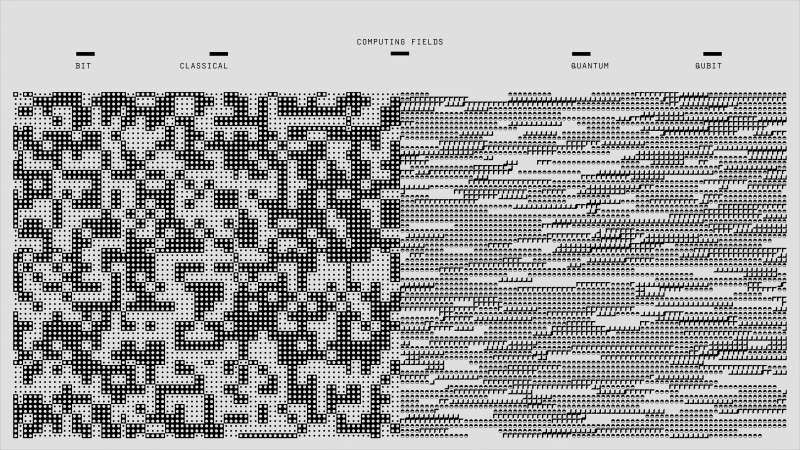When Islam Meets Tradition: Festive Syncretism in Chad and Sudan
Published on: April 30, 2025
In the sun-baked plains and lush river valleys of Chad and Sudan, faith is not only a system of beliefs but a living, breathing part of everyday life, intricately woven together with local customs going back centuries. While both countries are overwhelmingly Muslim—with about 55% of Chad's population and over 95% of Sudan's identifying as Muslim—the practice of Islam here often bears the beautiful imprint of Africa's diverse heritage. Nowhere is this more apparent than during religious festivals such as Eid al-Fitr and Eid al-Adha, which serve as vibrant platforms for unique syncretic practices blending pre-Islamic spiritualities and Islamic doctrine.
Pre-Islamic Traditions: A Living Legacy
The territories we now call Chad and Sudan were once home to powerful kingdoms and empires, such as the Kanem-Bornu and the old kingdoms along the Nile. Animist beliefs—centered on spirits, ancestors, and forces of nature—shaped daily life. Even after Islam swept through the Sahel between the 13th and 16th centuries, many communities retained aspects of their Indigenous worldview, subtly embedding them into new religious practices.
- Local deities and ancestral spirits are still acknowledged, though sometimes recast as Islamic saints or righteous ancestors.
- Christian and animist populations persist in southern Chad and in the Nuba Mountains of Sudan, preserving syncretic customs that influence even their Muslim neighbors.
Blended Rituals: Eid Sacrifice and Beyond
One of the most vivid examples of syncretism is the annual Eid al-Adha—the 'Festival of Sacrifice'. Across the Sahel, families ritually slaughter sheep, goats, or cows, recalling Abraham's willingness to sacrifice his son. Yet in many rural areas, the slaughter is accompanied by rites and symbols far older than Islam:
- Animal blood and bones are sometimes used to 'bless' the land, repurposing ancient ideas of fertility and protection.
- Women and children may circle the slaughtered animal, singing songs in local languages that invoke not only Allah but also the spirits of rivers, ancestors, or the earth itself.
- In some villages near Abeche, Chad, a tuft of hair or skin from the sacrificial goat is tied to a household to ward off evil—an adaptation of pre-Islamic amulet traditions.
During Ramadan and Eid al-Fitr, processional dance and drumming break out after prayers, led by local griots (praise singers), clashing with the formal atmosphere of mosque gatherings in the cities. Incense burning—a custom predating the spread of Islam to the region—perfumes homes and mosques alike, symbolizing purification and invoking unseen benevolent forces.
The Sacred Role of Women: Custodians of Ritual
While men traditionally lead the public prayers and mosque affairs, women are the heart of syncretic spirituality in Chad and Sudan. Many elder women, sometimes called ngar or kunga (local terms for female healers or wise women), are guardians of songs, dances, and ritual knowledge. Their roles include:
- Preparing and distributing special foods on festive days, using recipes believed to bring blessings—a practice linked to both Islamic sadaqah (charity) and earlier harvest thanksgivings.
- Leading trance dances after Eid sacrifices, believed to allow spirits to join the celebration and ensure community health.
- Creating amulets—gris-gris or hirz—inscribed with Quranic verses and traditional symbols, often worn by children and livestock during festival time as spiritual protections.
Fatima Abdulahi, a 63-year-old from a village near Moundou, Chad, recalls, "My grandmother taught me the songs to call the rain and the prayers for Eid. We mix them together. When we sing, we invite Allah's angels but also remember our grandmothers who first called the rains."
Amulets and Spirit Practices: Continuity and Adaptation
Despite formal Islamic discouragement of talismans, amulets play an enormous role during festivals. Traditionally, these contain Quranic verses written on paper, sewn into leather, but often also include beads, feathers, animal teeth, or small stones associated with pre-Islamic cosmology.
- Some families commission marabouts (Islamic healers) to create amulets for newborn children during Eid, blending Islamic protection with the invocation of local spirits.
- Spirit possession rituals—where select individuals enter trance to channel jinn or ancestral forces—are especially prevalent during public festivals around Lake Chad, with participants revered for their ability to 'diagnose' invisible threats or blessings facing the community.
During the Mawlid, the Prophet Muhammad’s birthday, processions in Sudan’s Sufi quarters feature both Quranic recitations and the pounding rhythms of tribal drums, with dancers donning costumes reminiscent of ancient masks used to evoke protective spirits.
Sufi Brotherhoods: Theological Flexibility and Social Cohesion
Sufism, with its mystical orientation, has been instrumental in nurturing syncretism. Both Chad and Sudan are home to powerful Sufi brotherhoods, such as the Tijaniyya and Qadiriyya, whose shrines draw pilgrims during festivals. Their practices accept and reinterpret pre-Islamic elements as part of a living devotional culture.
- Dhikr (the ritual repetition of Allah’s names) is often accompanied by drumming, clapping, and communal dancing, reminiscent of ancient fertility and healing rites.
- Sufi sheikhs sometimes bless water or objects for healing during festivals, echoing Indigenous uses of sacred springs and objects.
- Annual pilgrimages to the tombs of saints—such as Sidi Abd el-Qader in Omdurman, Sudan—involve music, chants, and feasting, fusing honor for Islamic martyrs with celebration akin to earlier ancestor worship ceremonies.
Between 'Pure' Islam and Local Practice: The Role of Religious Leaders
Not all religious authorities approve of syncretic practices. In the last decades, there has been an influx of Salafi and Wahhabi movements, particularly in urban centers, preaching a return to 'pure Islam' and criticizing what they see as superstitions. However, most village imams take a pragmatic approach:
- They often tolerate or even preside over rituals involving amulets or spirit dances, interpreting them as cultural expressions rather than challenges to faith.
- Youth and scholars sometimes debate these practices, but elders argue that as long as the central tenets of Islam are observed—prayer, fasting, charity—local custom is a source of communal strength, not religious dilution.
Imam Mohamed al-Tahir from a rural mosque in White Nile State, Sudan, explains: "The faith reaches the heart through the stories and ways our people understand. It is better to use the drum or wear the charm than to turn your back on Allah. We are all on the same road, just wearing different clothes."
Festive Food: Sacrifice, Sharing, and Symbolism
Food is central to festival syncretism. The dishes served often combine Islamic symbolism with local significance. For example:
- Chadian Boule—a millet porridge given in large quantities to the poor after Eid prayers, believed to ‘multiply’ blessings, much like ancient first-fruits offerings to local spirits.
- Sudanese Aseeda (wheat dumpling)—served with sour milk or honey; the circular shape is thought to ward off evil and attract good fortune, a pre-Islamic belief now integrated into Eid customs.
- Sharing of animal parts: Hearts and livers are distributed among children and the elderly, echoing traditional beliefs about empowering the vulnerable, overlapping with Islamic charity (sadaqah).
Oral Histories: Memory, Adaptation, and Identity
Stories and proverbs tell of syncretic adaptation. An oft-repeated tale in southern Chad describes how, during the famine of 1984, it was an old healer-woman who persuaded the imam to permit the 'rain dance' alongside Eid prayers, arguing, "Allah made the ancestors and the sky, and both listen if you are sincere." The rains returned that year, and to this day, both the prayer and dance are performed together in her memory during major celebrations.
The Role of Place: Sacred Landscapes and Festival Sites
Certain places—groves, springs, riverbanks—are considered holy by both Muslims and practitioners of older faiths. Festivals are often timed according to both the Islamic calendar and the agricultural cycle, reflecting a continuing reverence for the land's spirit.
- In the Hadjer-Lamis region of Chad, Eid gatherings are held under massive baobab trees believed to house benign spirits. After prayers, families tie scraps of cloth to the branches—a vestige of ancient ‘tree worship’—while reciting surahs from the Quran.
- At the confluence of the Blue and White Nile in Sudan, Islamic feast days attract spiritual practitioners, fishermen, and traders who swim, splash holy water, and offer thanks to Allah and the river's guardians for another year of survival.
Festivals as Arenas of Negotiation: Youth, Urbanization, and Modernity
As cities grow and educational opportunities expand, new generations are renegotiating the festive balance between Islamic orthodoxy and ancestral heritage. Youth in Khartoum or N'Djamena may favor mosque-centric celebrations and Arabic-language songs, yet many travel back to their family villages for Eid to partake in dances, rituals, and foods not acceptable (or even comprehensible) in the city.
Modern media also exerts influence: radio and WhatsApp groups circulate both Sufi chants and Salafi critiques, while some women’s groups now teach the making of both Quranic and traditional amulets as cultural heritage—no longer just magical practice but an identity marker.
The Seasonal Cycle: Syncretism Beyond Eid
Festal syncretism is not limited to the two major Eids. Local agricultural festivals, ancestor feasts, and village 'reunions' often coincide with or are absorbed into the Islamic calendar. For example:
- The 'Njambur' festival among the Sara of southwestern Chad, historically dedicated to river spirits, is now aligned with the last Friday of Ramadan, featuring collective sacrifices and water-pouring ceremonies honoring both Allah and ancestral guardians.
- In central Sudan, harvest homecomings—formerly presided over by animist priests—are now led by imams who bless the fields with Quranic verses, often accompanied by the playing of lyres and the spilling of millet beer, the latter discreetly removed from public view but an integral part of family ritual.
Table: Elements of Syncretism in Chad and Sudanese Islamic Festivals
| Practice | Islamic Element | Pre-Islamic/Traditional Element | Festival(s) |
|---|---|---|---|
| Animal Sacrifice | Commemoration of Abraham's test | Land/house blessing with blood or hair | Eid al-Adha, harvest ceremonies |
| Dance and Music | Sufi Dhikr (remembrance) | Trance, drumming, invocation of nature/spirits | Eid, Mawlid, rain dances |
| Amulets | Quranic verses, invocation of Allah | Beads, animal parts, symbols for protection | Eid, births, weddings |
| Sacred Sites | Prayers, recitation of Quran | Trees, rivers, stones as dwelling places for spirits | Eid, agricultural festivals |
| Food Offerings | Charity (sadaqah) | First fruits, blessing of the land, honoring the dead | Eid, harvest, funerals |
Resilience and Relevance: Syncretism Today
The resilience of syncretic festival practices in Chad and Sudan demonstrates a profound human capacity to adapt, preserve, and celebrate faith in countless forms. Even as threats rise from climate change, economic hardship, or ideological tension, festive syncretism fosters social cohesion—connecting young and old, local and global, past and present.
In the words of a Sudanese Sufi leader: "Our festivals are the mirrors of our souls. When we dance for both saints and ancestors, we keep our world whole. This is the Sudan way; this is the Chad way. There can be no future without remembering where we come from."










